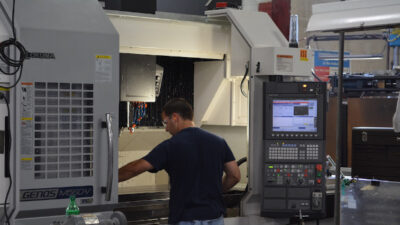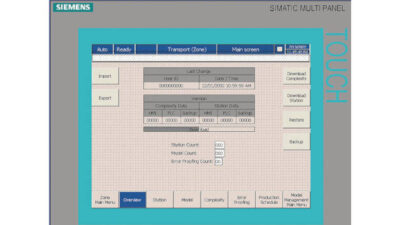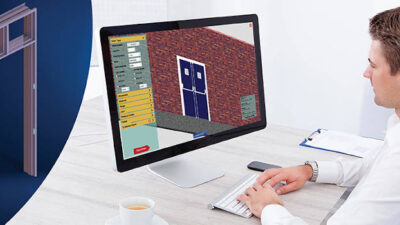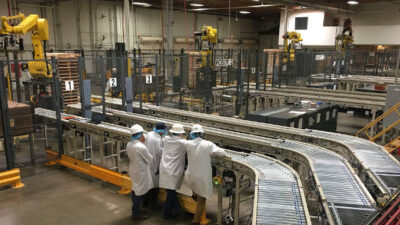Project management advice: Thinking of the automation project as a journey helps ensure safe and secure arrival, while keeping project detours and road bumps to a minimum. Planning, schedule, validation, and follow-up are key.

When starting a journey with your next automation project, there is nothing like a road map to ensure you get to your destination safe and secure. Take note of where you are starting and know where you are heading, and you will keep on track throughout the voyage. Let’s look at some ways to keep the detours and road bumps to a minimum in your next automation excursion.
Plan your trip
Before departing, make sure that you understand completely all the objectives of your project, particularly the business issues that are driving it. Only after you sort out the whys of your project should you move on to the technical issues concerning how to do it. Your destination is not just a working automation system, but a solution to some business concern. Keep your eye on that ball throughout your voyage.
Once you have the goals sorted out, take a good look at what is required to reach your destination. You are likely going to need resources in the form of material and human capital, unencumbered access to processing equipment, a reasonable calendar time frame to execute your project, and downtime to install and start it all up. Take stock of all these particulars. Make sure each aspect is identified to all stakeholders and assigned to a competent resource. Share your plan with all concerned parties to get your trip off to a fabulous start.
Plot route, stops on the way
Your road map should identify the objectives, schedule, and plan to execute your project; and map out periodic rest stops to take stock of your progress. The size and scope of your project will determine the formality of these items, but all successful projects will have similar routes and checkpoints.
Start by producing a detailed functional specification that describes exactly what you are doing and how you are doing it. This is the heart of your road map and should never be omitted from any automation project. This specification should define all functional details on what the system should do and what assets are required to get the job done.
Bring together the technical team, operations staff, and any other relevant stakeholders in a design meeting to review this specification. Do so prior to any other development work on the project. This will keep everyone on the same page and put your project on solid footing. This specification forms the basis upon which project progress is measured over time, and system performance is confirmed.
Validation
Plan a factory acceptance test (FAT) to validate the system with technical and operations staff prior to field installation of your new system. Use your functional specification as the foundation of your test plan. All relevant stakeholders should be in attendance, particularly those who participated in the design review. Allow enough time in your schedule to address any issues that may surface during the factory acceptance test prior to field installation of your system.
Finally, make sure you have a solid site installation plan that identifies and coordinates the various engineering, production, and trade activities that may be required to install your system. Any scheduled downtimes should be clearly indicated and communicated to all concerned. Make sure that system acceptance criteria are clear to all parties. This will insure your new system gets up and running to everyone’s satisfaction.
Upon arrival
Once you arrive at your destination, you will need to check if everything got there safely and as expected. Be sure to contact all your stakeholders to confirm expectations are met across the board. You will want to make sure that maintenance and operations staff is adequately trained to operate and take care of the new system. If possible, consider using maintenance staff during the installation of your system. This will help accelerate their ownership of it.
All of your system documentation will need to be in order to maintain your system effectively. Documentation is much easier to update as changes are made, rather than saving all the updates to the end. If you or any of your suppliers need remote access to your system, you will likely need to coordinate with IT staff to make sure these remote support activities are done effectively and safely. It is very important to get this access up and running before you need it.
Most new systems will have a punch list of items that need tending to as things move into operation. Address these issues in a timely manner, tracking them to resolution, and your arrival at your destination will be a pleasant one.
Share memories of the trip
While watching someone else’s vacation photos may not be everyone’s idea of the most fun way to spend an evening, they can be of immense interest to those planning a similar journey. It is a rare project where no lessons are learned. When you are finished, take the time to share your newfound knowledge with others to make the next voyage an even better experience for all.
With the right road map, you can make sure your next automation project is smooth sailing all along the way. Happy travels and bon voyage!
– David McCarthy is president and chief executive officer of TriCore Inc. Edited by Mark T. Hoske, content manager, CFE Media, Control Engineering, Plant Engineering, and Consulting-Specifying Engineer, [email protected].



